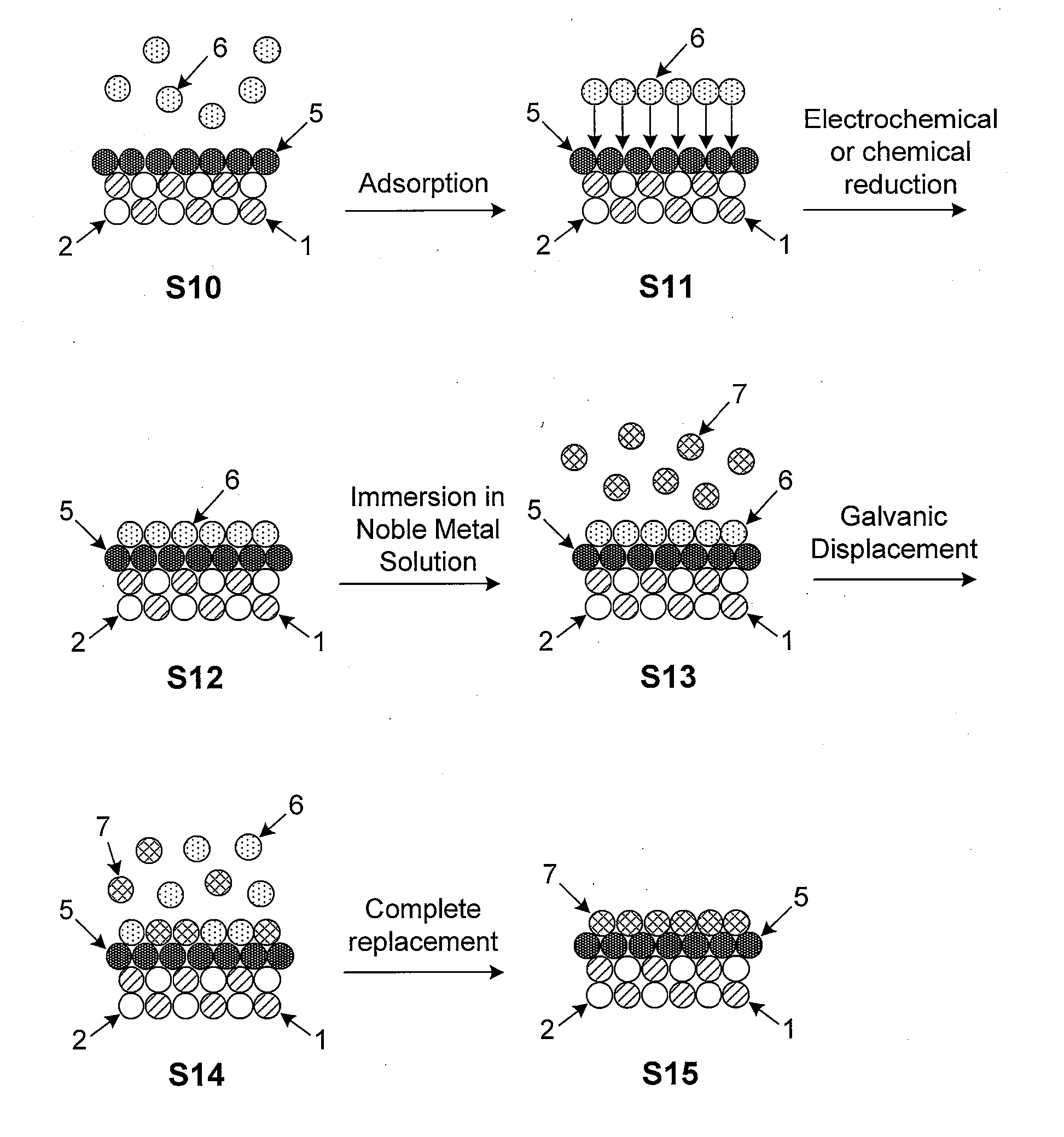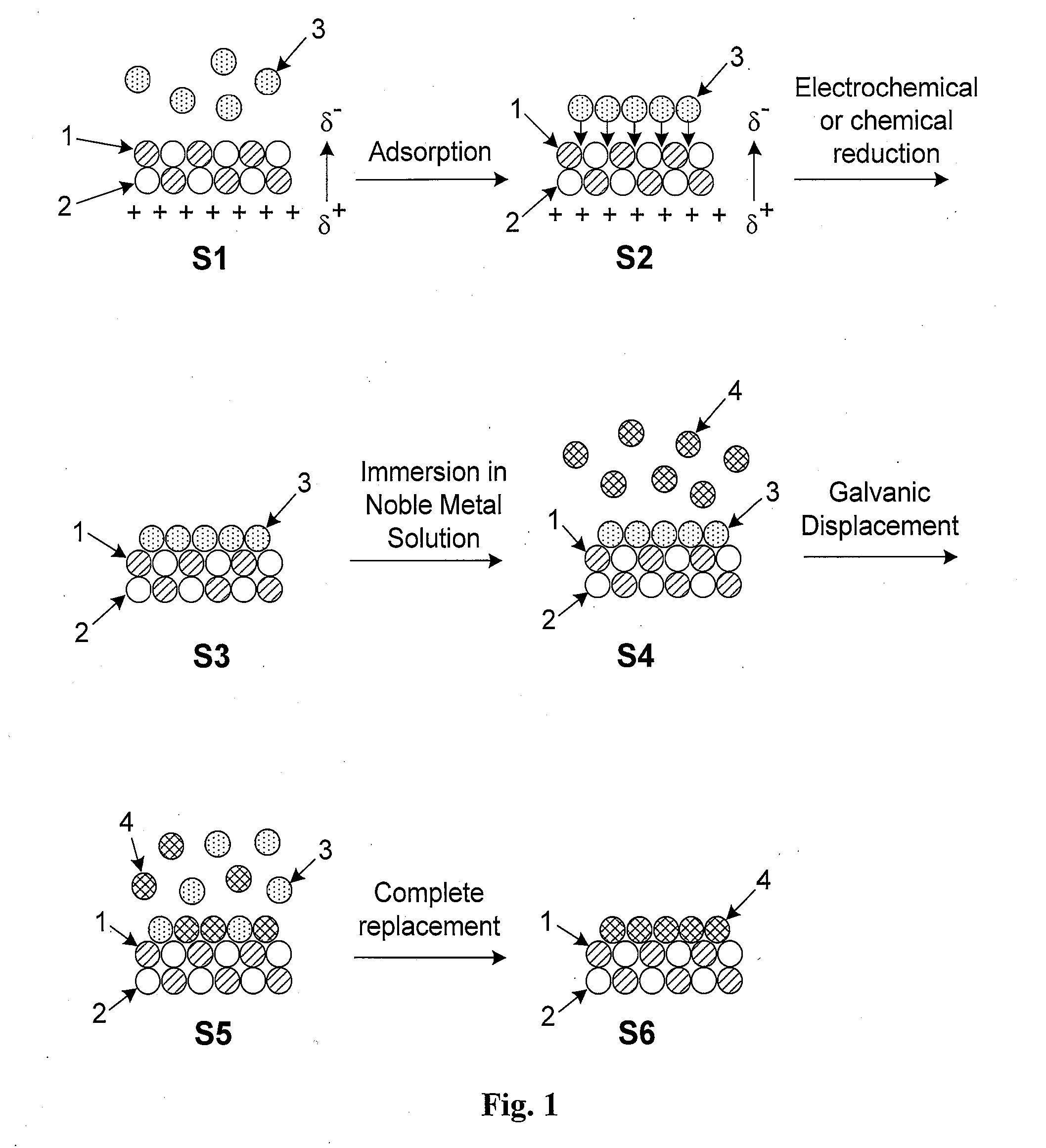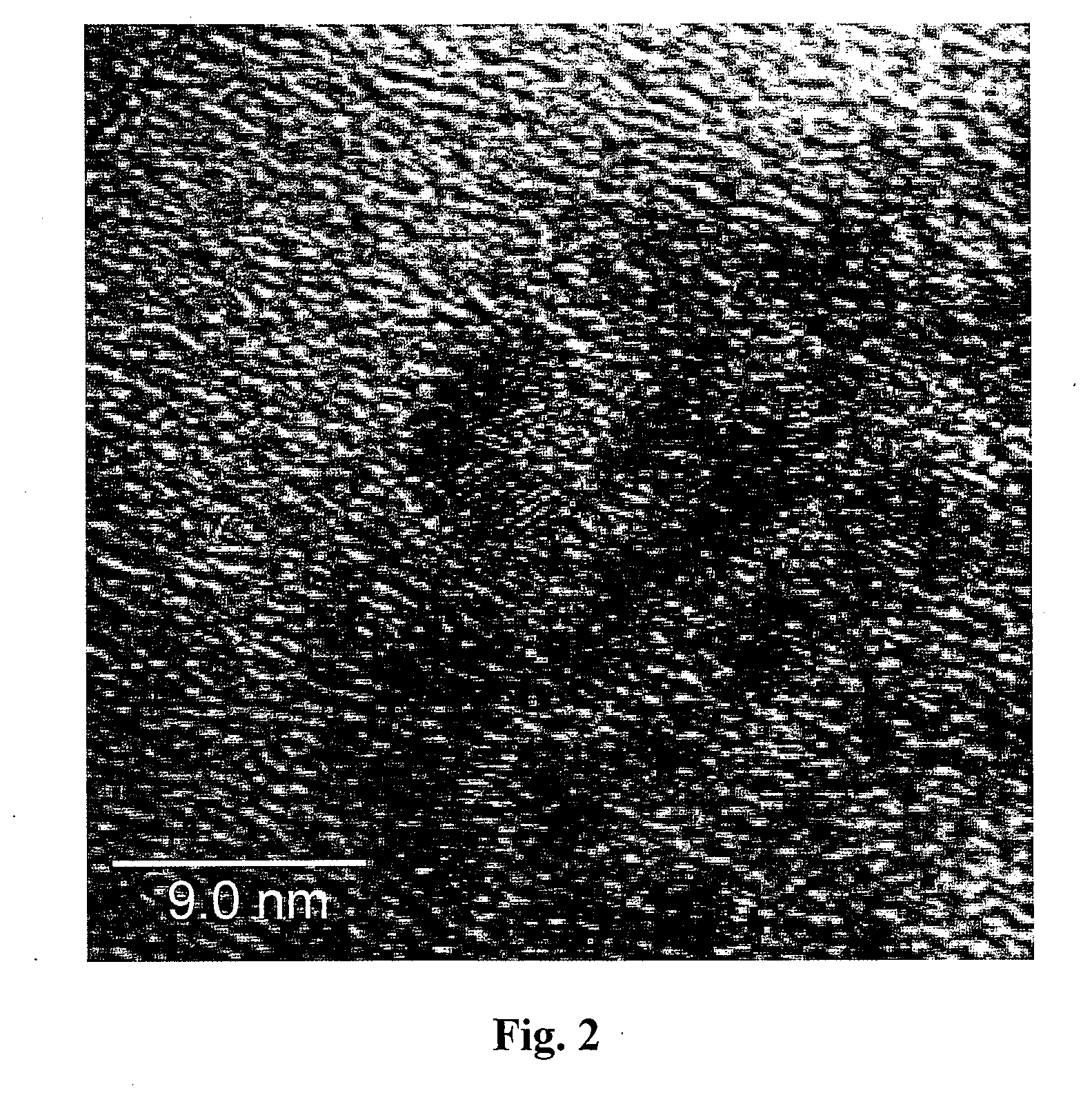Platinum-Based Electrocatalysts Synthesized by Depositing Contiguous Adlayers on Carbon Nanostructures
a carbon nanostructure, carbon nanotechnology, applied in the direction of catalyst activation/preparation, metal/metal-oxide/metal-hydroxide catalyst, etc., can solve the problem of limited charge storage capacity, inability to achieve high power density, and difficulty for ions in the electrolyte to access intrapore surfaces, etc. problem, to achieve the effect of improving the stability, long-term viability and activity of the surface layer, and facilitating more efficient and cost-effective electrochemical energy conversion
- Summary
- Abstract
- Description
- Claims
- Application Information
AI Technical Summary
Benefits of technology
Problems solved by technology
Method used
Image
Examples
Embodiment Construction
[0033]These and other objectives of the invention will become more apparent from the following description and illustrative embodiments which are described in detail with reference to the accompanying drawings. In the interest of clarity, in describing the present invention, the following terms and acronyms are defined as provided below.
ACRONYMS
[0034]ALD: Atomic Layer Deposition[0035]CVD: Chemical Vapor Deposition[0036]MBE: Molecular Beam Epitaxy[0037]ML: Monolayer[0038]MWNT: Multi-Walled NanoTube[0039]ORR: Oxidation Reduction Reaction[0040]PVD: Physical Vapor Deposition[0041]SWNT: Single-Walled NanoTube[0042]TEM: Transmission Electron Microscope[0043]UPD: Under Potential Deposition
DEFINITIONS
[0044]Adatom: An atom located on the surface of an underlying substrate.[0045]Adlayer: A layer of (atoms or molecules) adsorbed to the surface of a substrate.[0046]Bilayer: Two consecutive layers (of atoms or molecules) which occupy substantially all available surface sites on each layer and co...
PUM
| Property | Measurement | Unit |
|---|---|---|
| pressure | aaaaa | aaaaa |
| diameter | aaaaa | aaaaa |
| diameter | aaaaa | aaaaa |
Abstract
Description
Claims
Application Information
 Login to View More
Login to View More - R&D
- Intellectual Property
- Life Sciences
- Materials
- Tech Scout
- Unparalleled Data Quality
- Higher Quality Content
- 60% Fewer Hallucinations
Browse by: Latest US Patents, China's latest patents, Technical Efficacy Thesaurus, Application Domain, Technology Topic, Popular Technical Reports.
© 2025 PatSnap. All rights reserved.Legal|Privacy policy|Modern Slavery Act Transparency Statement|Sitemap|About US| Contact US: help@patsnap.com



